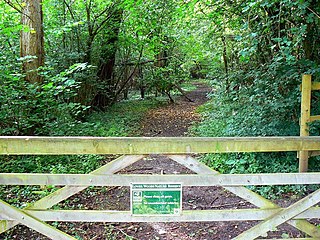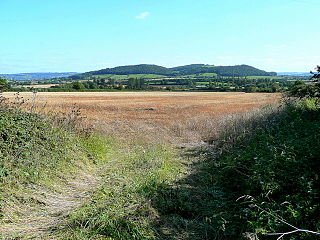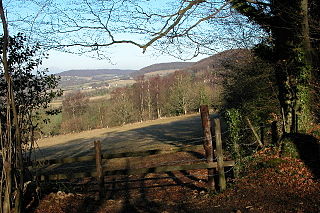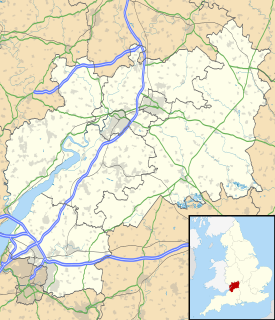| Site of Special Scientific Interest | |
| Area of Search | Avon |
|---|---|
| Grid reference | ST665906 |
| Coordinates | 51°36′48″N2°28′59″W / 51.613215°N 2.483144°W Coordinates: 51°36′48″N2°28′59″W / 51.613215°N 2.483144°W |
| Interest | Geological |
| Area | 1.7 hectares (4.2 acres) |
| Notification | 1967 |
| Natural England website | |
Buckover Road Cutting (grid reference ST665906 ) is a 1.7 hectare geological Site of Special Scientific Interest near the town of Thornbury, South Gloucestershire, notified in 1967.

The Ordnance Survey National Grid reference system is a system of geographic grid references used in Great Britain, distinct from latitude and longitude. It is often called British National Grid (BNG).

The hectare is an SI accepted metric system unit of area equal to a square with 100-metre sides, or 10,000 m2, and is primarily used in the measurement of land. There are 100 hectares in one square kilometre. An acre is about 0.405 hectare and one hectare contains about 2.47 acres.
The site shows an unconformity between Silurian rocks and quartz conglomerate of the Devonian period. [1]

An unconformity is a buried erosional or non-depositional surface separating two rock masses or strata of different ages, indicating that sediment deposition was not continuous. In general, the older layer was exposed to erosion for an interval of time before deposition of the younger, but the term is used to describe any break in the sedimentary geologic record. The significance of angular unconformity was shown by James Hutton, who found examples of Hutton's Unconformity at Jedburgh in 1787 and at Siccar Point in 1788.
The Silurian is a geologic period and system spanning 24.6 million years from the end of the Ordovician Period, at 443.8 million years ago (Mya), to the beginning of the Devonian Period, 419.2 Mya. As with other geologic periods, the rock beds that define the period's start and end are well identified, but the exact dates are uncertain by several million years. The base of the Silurian is set at a series of major Ordovician–Silurian extinction events when 60% of marine species were wiped out.
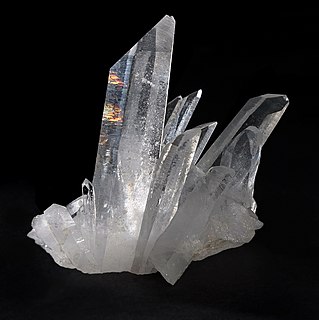
Quartz is a mineral composed of silicon and oxygen atoms in a continuous framework of SiO4 silicon–oxygen tetrahedra, with each oxygen being shared between two tetrahedra, giving an overall chemical formula of SiO2. Quartz is the second most abundant mineral in Earth's continental crust, behind feldspar.







